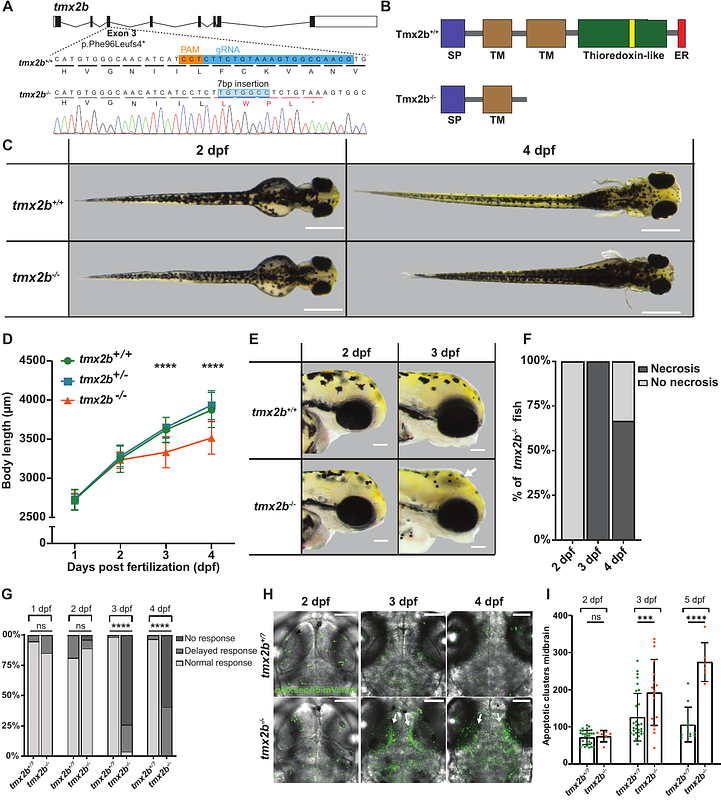The non-canonical thioreductase TMX2 is essential for neuronal survival during embryonic brain development

The non-canonical thioreductase TMX2 is essential for neuronal survival during embryonic brain development
Dekker, J.; Lam, W.; Schot, R.; Ophorst, F.; van der Linde, H. C.; Sanderson, L.; Kremers, G.-J.; Berdowski, W. M.; de Konink, C.; van Woerden, G. M.; Mancini, G. M.; van Ham, T. J.
AbstractBiallelic variants in thioredoxin-related transmembrane 2 protein (TMX2) can cause a brain malformation of cortical development (MCD), characterized by primary microcephaly, polymicrogyria and pachygyria by an unknown mechanism. To better understand and visualize how TMX2 loss disrupts brain development in vivo we investigated the function of TMX2, using the zebrafish embryo as a model system. We generated zebrafish deficient for TMX2 ortholog tmx2b, which during the first 2 days post fertilization (dpf) showed normal behavioral activity and brain developmental hallmarks. From 3 dpf onwards however, tmx2b mutants failed to exhibit locomotor activity, which was accompanied by cell death primarily in the brain, but not in other organs or in the spinal cord. Strikingly, cell death in tmx2b mutants occurs specifically in newborn neurons within a ~1.5-hour timeframe, whereas neuronal progenitor and other glial cells are preserved, and could be suppressed by inhibiting neuronal activity. In vivo GCaMP6s calcium imaging showed a persistent ~2-fold increase in calcium in neurons after the onset of cell death. This suggests that calcium homeostasis underlies the tmx2b mutant brain phenotype. Altogether, our results indicate that TMX2 is an evolutionary conserved, protective regulator essential specifically for newborn neurons to survive after their differentiation in the vertebrate embryonic brain.


